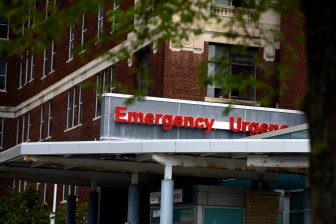Housing Minister Sean Fraser says he supports the idea of tying the number of immigrants to Canada with the number of homes built; something Conservative Leader Pierre Poilievre is also proposing.
But he suggests Poilievre’s pledge to link immigration and homebuilding in response to the country’s housing shortage doesn’t focus enough on where Fraser says the most impactful population growth is coming from: temporary foreign workers and international students, not permanent immigrants.
“Is the idea of tying the number of people who come to Canada to the number of homes available a good one? Yes. In fact, it’s one of the factors we have considered over the past number of years,” said Fraser during a housing announcement in Halifax on Monday.
“But we need to recognize that we have to bring other players to the table, not just provincial counterparts but the institutions who are dramatically increasing the number of study permits they request, sometimes at the personal financial gain of some of the people behind some of those private colleges.”

At a news conference in Winnipeg last Friday, Poilievre accused the housing minister of “failing to make the link between the number of homes built and the population growth” in his previous role as immigration minister.
Get the latest National news.
Sent to your email, every day.
“Obviously you need to build homes if you’re going to bring in people and right now, we’re not building enough homes,” Poilievre told reporters.
Internal documents from 2022 obtained by the Canadian Press show employees within the immigration department warned their deputy minister that boosting immigration would affect housing.
Ultimately, the Liberals decided to increase the number of permanent residents to half a million in 2025. They defended their decision, saying Canada needs more newcomers to help fill a major labour shortage.

While Fraser said he backs the idea of linking newcomers and housing construction, he accuses Poilievre of having a “lack of understanding” of the immigration system and what’s actually driving “rapid population growth.”
Fraser says temporary immigration programs are putting pressure on the housing system and creating a “serious issue we need to address.”
He pointed to the temporary foreign worker and international student programs. The federal government has said they are considering a cap on international student, but want to take a year to work with provinces first to try to find solutions.

“Enough is enough,” Immigration Minister Marc Miller said in announcing changes to the international student program last year. “If provinces and territories cannot do this, we will do it for them and they will not like the bluntness of the instruments that we use.”
Miller previously described the idea of a cap on international students as akin to “surgery with a hammer” during an interview with Global News.
Fraser said the program has grown “by hundreds of thousands of people each year” in the last couple of years.
“There are some institutions in parts of this country, I have the sincerely held belief, have come to exist just to exploit the program for the personal financial gains of the people behind some of these schools, if we can call them that,” he said.
Fraser spoke during a press conference with Atlantic provinces’ housing ministers who said they’re looking at ways to boost more factory-built housing for the East Coast, as the region’s population keeps rising at a rapid pace.
Factory-built housing is one of Ottawa’s responses to strong criticisms over the cost of living, caused in part by rising home prices and rents. The CMHC has estimated that 3.5 million more housing units are needed by 2030 in order to start dealing with the housing affordability issue.
— with a file from The Canadian Press.
© 2024 Global News, a division of Corus Entertainment Inc.




